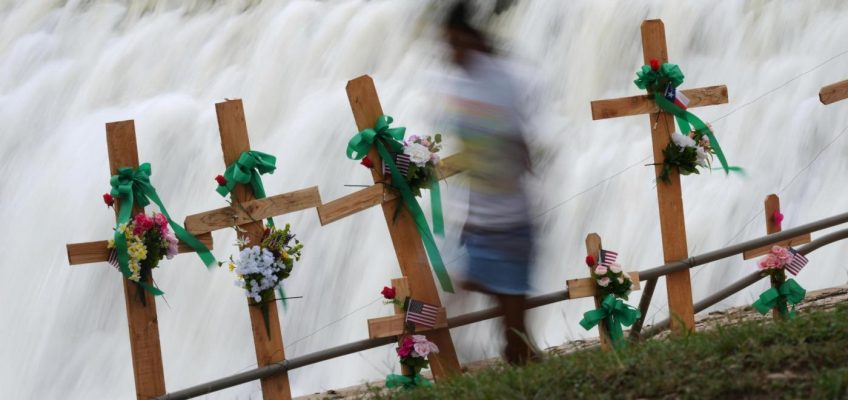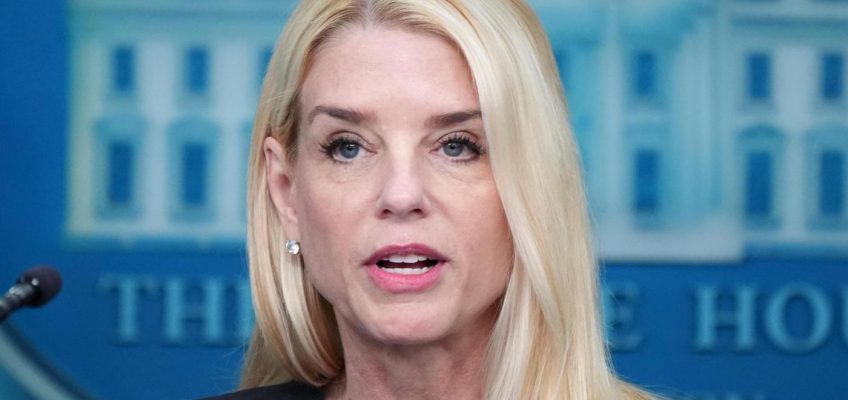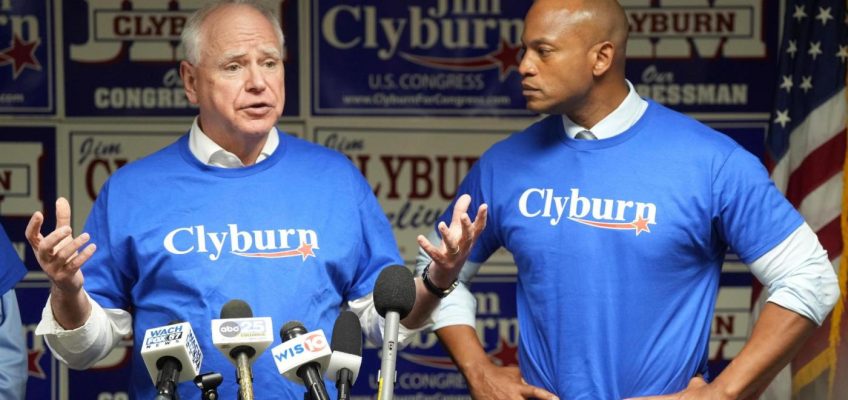By GABRIELA AOUN ANGUEIRA
KERRVILLE, Texas (AP) — Rescue crews in Texas kept a wary eye on river levels Monday, hoping to resume the search for people still missing from catastrophic flooding that pummeled the central part of the state earlier this month and killed at least 132 people.
Search and rescue operations along the Guadalupe River were halted on Sunday after a new round of severe weather led to high water rescues elsewhere and prompted fears that waterways could surge again above their banks.
It was the first time search efforts for victims of the July Fourth floods were stopped due to severe weather. Authorities believe more than 160 people may still be missing in Kerr County alone, and 10 more in neighboring areas.
In Kerrville, where local officials have come under scrutiny over whether residents were adequately warned about the rising water in the early morning hours of July 4, authorities went door-to-door to some homes after midnight early Sunday to alert people that flooding was again possible. Authorities also pushed phone alerts to those in the area.
During the pause in searches, Ingram Fire Department officials ordered crews to immediately evacuate the Guadalupe River corridor in Kerr County, warning the potential for a flash flood was high.
Late Sunday afternoon, the Kerr County Sheriff’s Office announced that search teams in the western part of that county could resume their efforts. The Ingram Fire Department hoped to resume search operations by around noon or early Monday afternoon, spokesman Levi Bizzell said. Crews were checking river levels Monday morning and also seeing how muddy and slick the area is before searchers resume their work, he said.
“Everybody here wants to be out there working,” he said. “They literally come in in the morning whether they are tired or not and they just want to get out there and work because they want to find closure for these families.”
The soil is still primed for enhanced runoff of water across Texas Hill County — a key concern since more rains are expected Monday, authorities said. A flood watch covering the region is in effect until 9 p.m. Monday, with up to 5 inches of rain possible in some spots, the National Weather Service said.
Latest floods damage dozens of homes
Gov. Greg Abbott said on X the state conducted rescues of dozens of people in San Saba, Lampasas and Schleicher counties, and that evacuations were taking place in a handful of others.
The latest round of flooding damaged about 100 homes and knocked down untold lengths of cattle fencing, said Ashley Johnson, CEO of the Hill Country Community Action Association, a San Saba-based nonprofit.
“Anything you can imagine in a rural community was damaged,” she said. “Our blessing is it was daylight and we knew it was coming.”
With more rain on the way, county officials ordered everyone living in flood-prone areas near the San Saba River to evacuate, with people moved to the San Saba Civic Center, Johnson said.
A wide-ranging weather system brings heavy rains
The weather system brought slow-moving storms and multiple rounds of heavy rain across a widespread area, pushing rivers and streams over their banks.
The rains caused waterways to swell further north in Texas, where emergency crews rescued one motorist who was left stranded in waist-high rapids on a submerged bridge over the Bosque River.
“He drove into it and didn’t realize how deep it was,” said Jeff Douglas, president of the McGregor Volunteer Fire Department.
In the west Texas city of Sonora, authorities called for evacuations of some neighborhoods due to rising flood waters. Sonora is located about 110 miles (177 kilometers) northwest of Kerrville.
Kerrville residents get support from police, alerts
Under heavy rain, Matthew Stone on Sunday cleared branches and a log from a storm sewer in front of his home on Guadalupe Street in Kerrville as several inches of water pooled up on the road.
Multiple houses on the street overlooking the Guadalupe River were severely impacted by the July 4 floods. Stone said he felt safe for now.
“The cops have been coming back and forth, we’re getting lots of alerts, we’re getting a lot of support,” he said.
Related Articles
Charges dropped against Utah doctor accused of throwing away $28,000 in COVID vaccine doses
Most teens — and girls especially — see college as key to jobs and life skills, poll says
Elmo’s hacked X account posted racist messages. Sesame Workshop is trying to regain control
Wildfire along Grand Canyon’s North Rim destroys historic lodge and is spreading rapidly
Boys & Girls Club programs threatened by Trump grant freeze serve thousands of families
Just before daybreak on the Fourth of July, destructive, fast-moving waters rose 26 feet (8 meters) on the Guadalupe River, washing away homes and vehicles. Ever since, searchers have used helicopters, boats and drones to look for victims.
The floods laid waste to the Hill Country region of Texas. The riverbanks and hills of Kerr County are filled with vacation cabins, youth camps and campgrounds, including Camp Mystic, the century-old, all-girls Christian summer camp.
Located in a low-lying area along the Guadalupe River in a region known as flash flood alley, Camp Mystic lost at least 27 campers and counselors.
The flood was far more severe than the 100-year event envisioned by the Federal Emergency Management Agency, experts said, and moved so quickly in the middle of the night that it caught many off guard in a county that lacked a warning system.
Associated Press reporters Sophia Tareen in Chicago; Carolyn Thompson in Buffalo, New York; Juan Lozano in Houston, Michael Weissenstein in Dobbs Ferry, New York; and Jeff Martin in Kennesaw, Georgia, contributed to this report.




